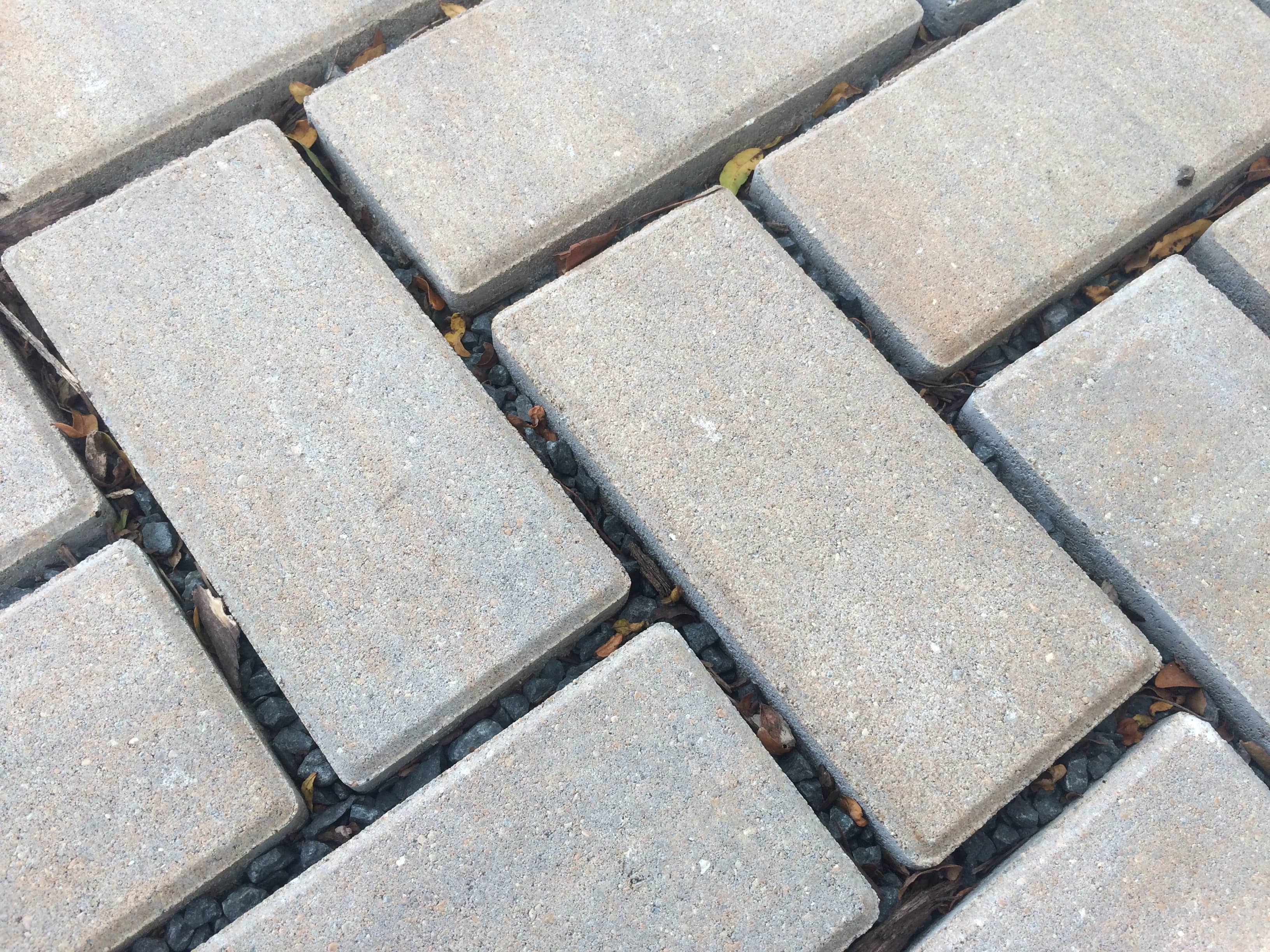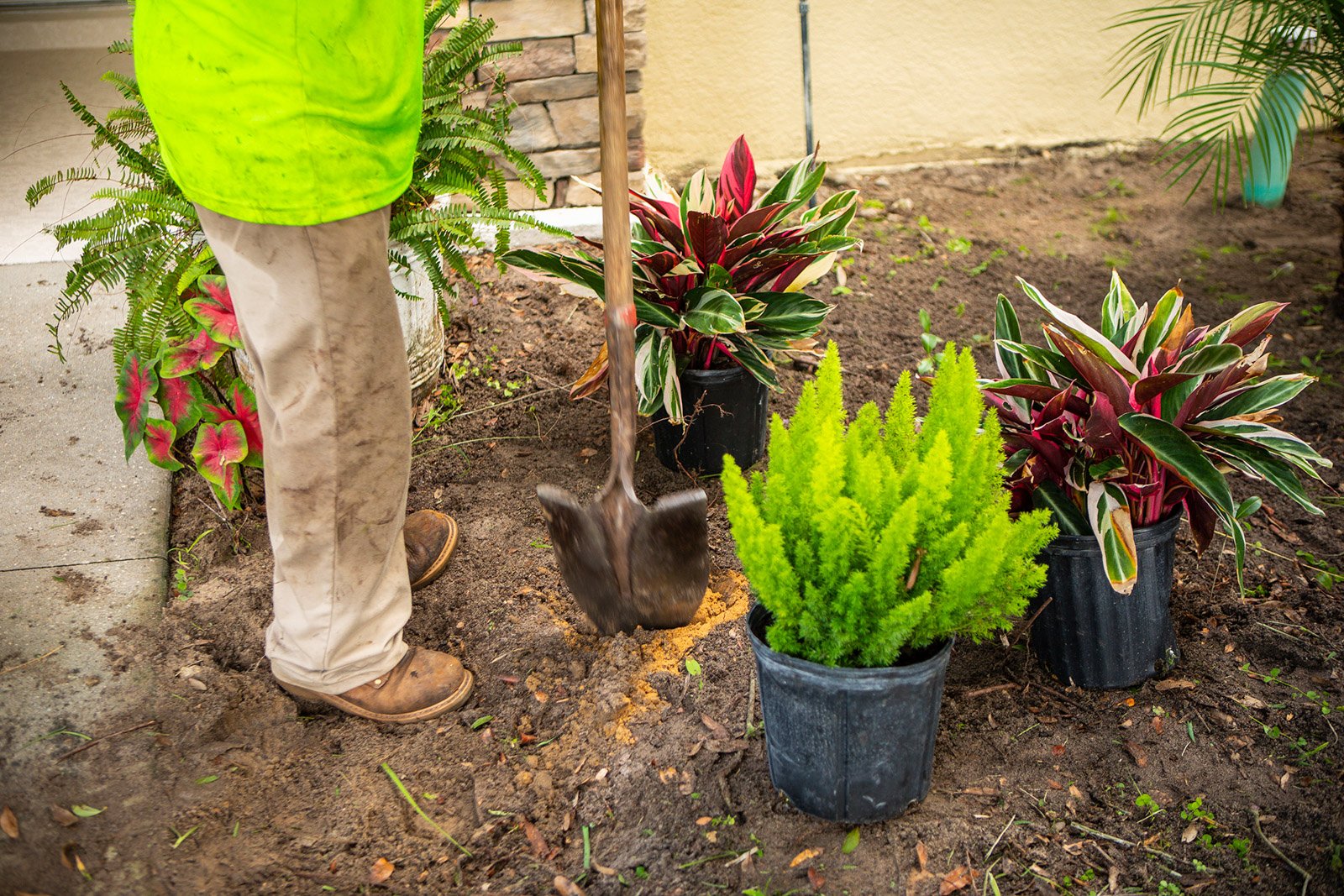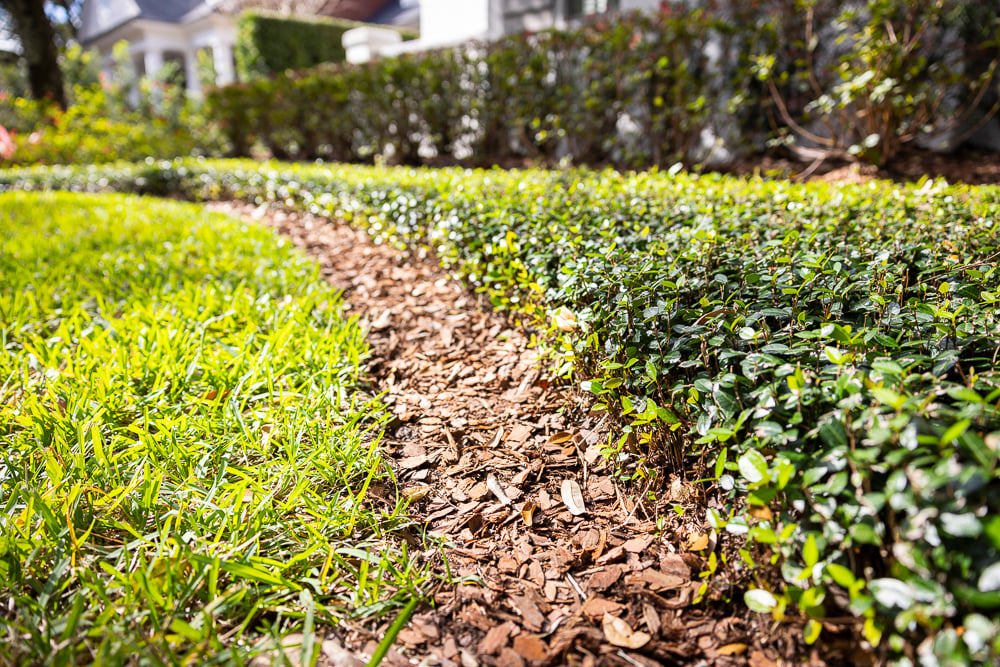During a long, hot drought, all you can think about is long drinks of water. And staying cool. And not dying.
Out there in your yard, your lawn is saying, “Same.”
Jump to Section
- How Long Is the Dry Season in Orlando?
- How Can You Make Your Lawn More Drought-Tolerant?
- Nurture Healthy Soil With Lawn Care Practices
- Proper Mowing is Lawn Care, Too
- All About Irrigation for Central Florida Lawns
- Drought Protection for Landscape Plants
- Need Drought-Tolerant Grass in Central Florida? Trust Ground Source
How can you make your lawn more drought-tolerant?
First, choose a sod variety that can withstand drought. Water deeply but less often to encourage deep roots. Use a smart irrigation system to water your plants efficiently. Aerate your lawn to help that precious water reach its thirsty roots. Apply topdressing to help your soil retain water.
Keep reading for more tips for hot-weather lawn care in Central Florida.
How Long Is the Dry Season in Orlando?
While much of the country divides the year into spring, summer, fall and winter, Central Florida has an extra seasonal barometer: dry season and wet season.
The dry season here in Central Florida is November through April, according to the National Weather Service.

While tropical storm systems can bring periods of heavy rain through November, the frequency of rain almost always decreases around this time.
You can track drought in Central Florida through the U.S. Drought Monitor, which reports the location and intensity of drought across the country.
How Can You Make Your Lawn More Drought-Tolerant?
You can boost your lawn’s ability to stand up to dry weather in a variety of ways:
Some varieties of sod are more drought-resistant than others.
What’s the best Orlando grass for droughts? It depends on how pretty you want your lawn to be.
Here in Central Florida, the best sod is typically a variety of St. Augustine or Zoysia. Florida homeowners choose these types of sod for their rich green color and soft feel. They’re bare-toe kinds of grasses.
While Zoysia has excellent drought recovery, not all types of St. Augustine do well during periods of drought.
Classic St. Augustine is not drought tolerant. Neither is Floratam, another popular variety. But Seville St. Augustine stands up better in dry periods. It doesn’t need as frequent watering as the other types of St. Augustine grass.
Hardy Bermuda is a drought-tolerant grass, renowned for its ability to withstand challenging conditions, including high temperatures and prolonged droughts. And it recovers from damage quicker than other types of grass.
What grass requires the least amount of water? Argentine Bahia handles drought like a champ. Once it’s established, Bahia can live off rainwater alone. But it’s not pretty. It has a wild, pasture-like look. So if it creeps into your neighbor’s beautiful green St. Augustine lawn, prepare for war.

Nurture Healthy Soil
Healthy, robust soil hangs onto precious moisture better so your lawn’s roots can use it during Central Florida drought.
How do you boost your soil’s health? A few important ways:
Get Your Lawn Aerated
Aeration, which creates holes that help loosen your soil, makes sure that important water reaches your lawn’s roots. It also encourages deeper root growth, which helps your lawn during the stress of drought.
Lawn aeration is an excellent annual task to help keep water reaching your lawn’s roots, regardless of the weather. It should be done when the grass is actively growing, ideally in spring or fall.
Add Topdressing
Topdressing is a nutrient-rich layer of soil blended with compost and other organics. As the material settles, the nutrients are released into the soil, giving it a much-needed boost.
Here at Ground Source, we use Comand Soil in our topdressing. This specialty compost helps restore the soil ecosystem by providing all-important organic matter and beneficial microbes crucial to soil health.
Proper Mowing is Lawn Care, Too
What does the way you mow your lawn have to do with lawn care during drought?
You might be surprised.

Mowing your grass at a taller height encourages the roots to grow deeper, allowing them to access water further down in the soil. Deeper, stronger roots also reduce the stress on your lawn during periods of drought in Central Florida.
Keep those mower blades sharp, too. Sharp blades make a cleaner cut, which encourages stronger, healthier grass.
Don't forget to leave your grass clippings instead of bagging them. They break down and create a natural mulch that helps your lawn retain moisture.
All About Irrigation for Central Florida Lawns
How to keep your lawn alive in a drought? Your irrigation habits make a huge difference:
Don’t Water Too Much
It’s tempting to soak your lawn during dry periods. But too much water is as bad as not enough.
Shoot for 3/4 inch of water per zone for lawn irrigation in Central Florida.

How long does it take to deliver 3/4 inch of water?
It depends on the type of irrigation head:
- Spray heads: 30 minutes
- Rotors: 50-60 minutes
- MP rotors: 1-2 hours
- Drip irrigation: 1.5 to 2 hours
If you water too much, you invite pests and lawn diseases. Over-watering also encourages thatch, a layer of partially decomposed plant material that forms a dense mat between your lawn and the soil. Thatch prevents water and oxygen from reaching your lawn’s roots.
Water less often, but for longer periods. This encourages deep roots, which can withstand periods of drought more effectively.
Lawn Care During Drought: Check Your Sprinklers
During drought, pay extra attention to your hard-working irrigation system. This isn’t the time to let maintenance slide.
Check for any issues that could be wasting water, such as leaks, clogs, or broken sprinkler heads.

Make sure your irrigation heads are hitting the lawn — not your driveway, sidewalks, the side of your house or that annoying neighbor on his bike. Every drop of water matters when it comes to hot-weather lawn care in Central Florida.
Before the dry season arrives around October, schedule an irrigation inspection so technicians can ensure all your system’s components are in good working order. They’ll also identify any issues that can lead to water waste, including cracked lines, leaky valves, clogged nozzles, or broken spray heads.
Be Smart About When You Water
The timing of your Central Florida lawn irrigation matters, too, so you’re not losing some of that valuable water to evaporation.
Water early in the morning, before that sizzling Florida sun heats things up. The best time is between midnight and 4 am. If you water during the heat of the day, much of the water your lawn needs will evaporate in the heat and never reach your lawn’s thirsty roots.
Speaking of smart…
Use Smart Irrigation
An intelligent irrigation system is your best friend when it comes to hot-weather lawn care.

Smart irrigation controllers automatically adjust your watering schedule based on what’s happening out there, from the amount of rainfall to the temperature to how much moisture is in the air. It recognizes when drought conditions occur and responds accordingly, keeping your lawn well-hydrated.
Drought Protection for Landscape Plants
The dry season also stresses your landscape plants.
Stick to a few innovative strategies to keep your landscape plants thriving in dry weather:
Plant Natives
Include native Florida plants in your landscape, such as muhly grass, saw palmetto, coontie, and passionflower. Once established, they require less water than fussier plants. They’ve already adjusted to the natural climate here and often have cool tricks up their sleeve to survive drought.

Coontie, for example, has a large, fleshy underground stem and tap root that acts as a reservoir, storing water for use during dry periods.
Bougainvillea, one of the most popular plants in Central Florida, isn’t native, but it can store water in its tissues, allowing it to survive periods without rain or irrigation.
Group Plants By Water Needs
Group plants with similar water requirements together to make it easier to give them all the right amount of water, without waste.
Use Drip, Drip, Drip Irrigation
Drip irrigation uses less water than typical sprinkler systems because it’s applied directly to the plants. There’s no water waste from evaporation because water isn’t spraying into the air.
Drip irrigation uses hoses pierced with tiny holes that allow small quantities of water to trickle slowly into the soil.

The hoses are installed on top of your soil and then covered with mulch to conceal them.
You wouldn’t use this system for Central Florida lawn irrigation, but it’s a great way to water your plants, especially during dry periods.
Drip irrigation delivers water directly to plant roots, so you’re not losing precious water to evaporation or runoff. That means your plants are getting all the water they need.
Don’t Forget the Mulch
A nice layer of rich bark mulch looks great, but it also helps the soil in your planting beds retain moisture, so you won’t have to water as much.
Need Drought-Tolerant Grass in Central Florida? Trust Ground Source
When it’s hot and dry, everybody’s stressed, including your lawn.
How can you make a lawn more drought-tolerant? Take a deep breath and give us a call. Our skilled pros can help with expert sod advice, plant care and lawn irrigation in Central Florida.

We’re plant and irrigation experts, and we’re with you every step of the way as you plan your perfect outdoor space.
Are you ready to experience the vibrant and impressive landscape you've always wanted? Request a quote today! We’ll help you review your options and then transform your property.






